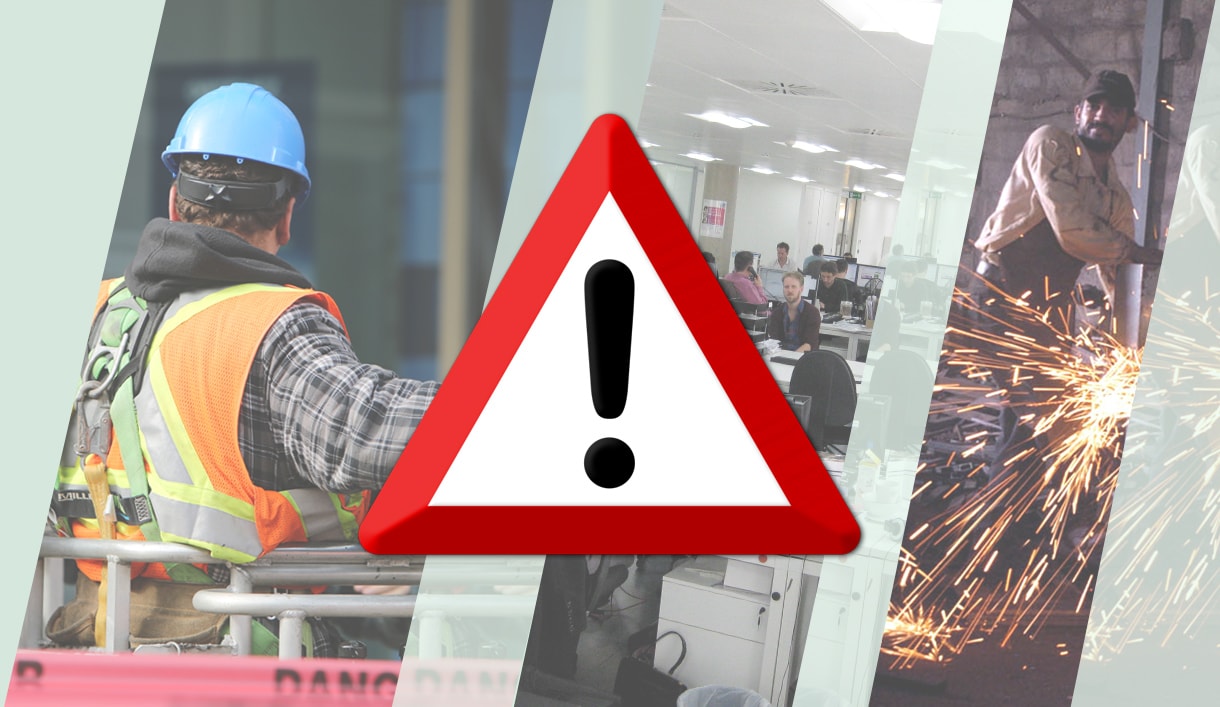How Safe Are UK Workplaces?
UK Workplaces – Just how safe are they?
Over recent decades, major advances have been made in terms of the safety of UK workplaces. Now, firms are subject to strict rules governing how they manage the risks facing their employees, and this has transformed the experiences of personnel up and down the land.
Fatal injury rates are declining
These changes are reflected in the fatal injury statistics provided by the Health and Safety Executive (HSE). The organisation has revealed that 133 workers were fatally injured between April 2013 and March 2014. This compared with 150 people the previous year. Meanwhile, the overall fatal injury rate fell from 0.51 per 100,000 workers in 2012-13 to 0.44 last year.
Commenting on these findings, HSE chair Judith Hackitt said:
“Whilst these are only provisional figures, they confirm Britain’s performance in health and safety as world class. For the last eight years we have consistently recorded one of the lowest rates of fatal injuries to workers among the leading industrial nations in Europe.”
The UK is ahead of many of its neighbours
 So, how safe are UK workplaces? It’s worth noting that the UK is ahead of many of its neighbours in Europe when it comes to safety. According to Eurostat, the statistical office of the European Union, the performance of the UK is above average in key areas such as injuries, fatalities and levels of self-reported work-related ill health. In 2011, the standardised rate of fatal injuries was the third lowest of those published by Eurostat and the UK consistently performs well compared with other large economies like France, Germany, Italy, Poland and Spain.
So, how safe are UK workplaces? It’s worth noting that the UK is ahead of many of its neighbours in Europe when it comes to safety. According to Eurostat, the statistical office of the European Union, the performance of the UK is above average in key areas such as injuries, fatalities and levels of self-reported work-related ill health. In 2011, the standardised rate of fatal injuries was the third lowest of those published by Eurostat and the UK consistently performs well compared with other large economies like France, Germany, Italy, Poland and Spain.
No room for complacency
However, there is no room for complacency. While workers in the UK may be getting safer, and may be at a lower risk than many of their counterparts located elsewhere around the world, they do still face dangers. Highlighting this fact, HSE figures show that 1.2 million people who worked during the last year were suffering from an illness that they believed was caused or made worse by their employment. Also during this 12-month period, Labour Force Survey statistics suggest that 629,000 injuries occurred at work, of which 148,000 led to absences of more than seven days. Meanwhile, in England and Wales alone, 551 enforcement cases related to safety lapses were prosecuted by HSE and a further 88 were prosecuted by local authorities.
It’s also important to note that in 2012-13, the economic costs to the country arising from work-related injuries and new cases of ill health totalled an estimated £14.2 billion.
Take appropriate steps to boost safety
The overriding message from all these facts and figures is that, while there is cause for optimism concerning safety standards in UK workplaces, more can still be done to reduce risk. To help ensure your organisation plays its part in this process, it’s vital that you conduct thorough risk assessments and ensure that your staff members have all the safety training they need.
By making continued efforts to drive up safety standards, employers across the country can help to minimise the human suffering and financial and legal strife associated with workplace accidents and injuries.










Leave a Reply
Want to join the discussion?Feel free to contribute!